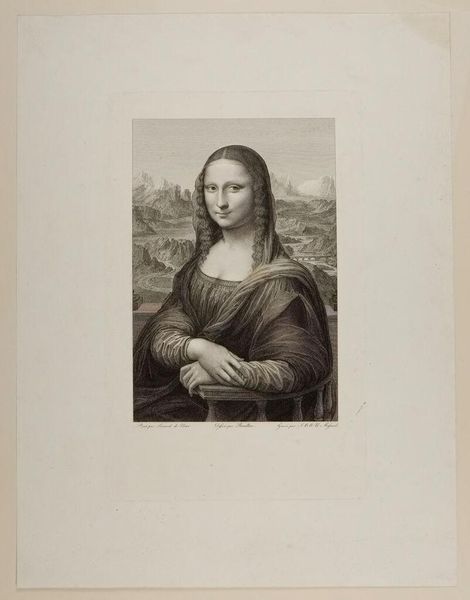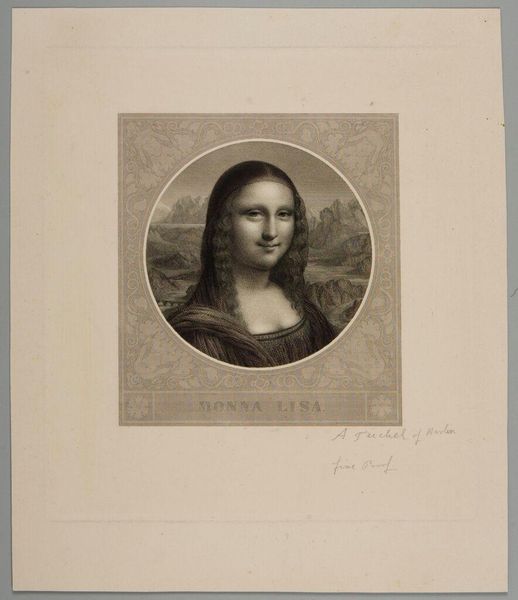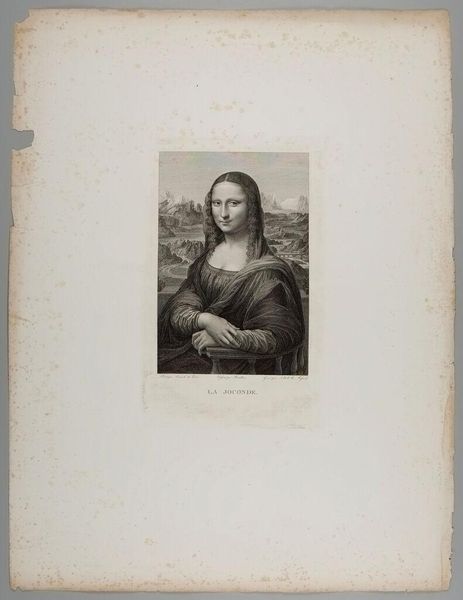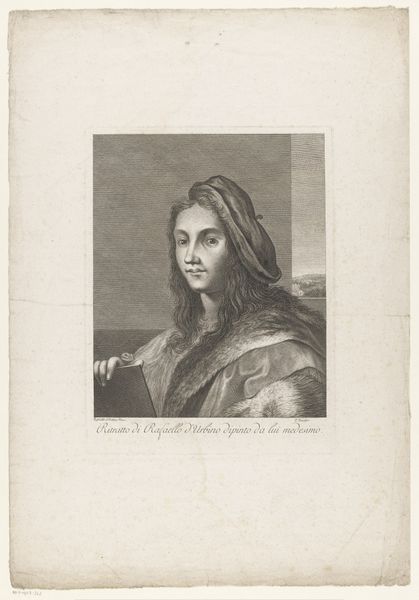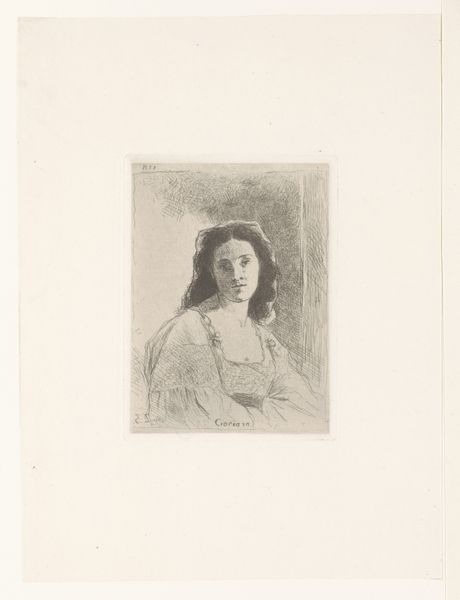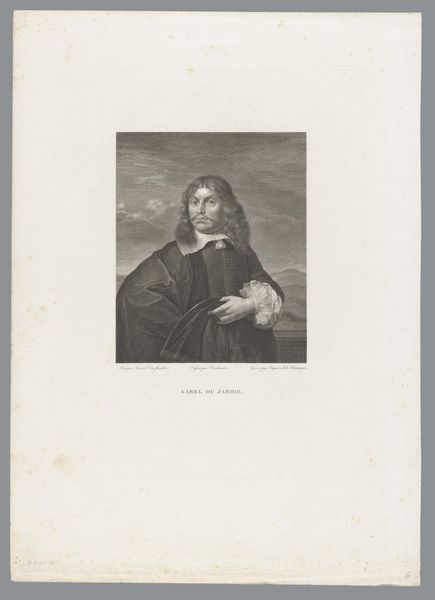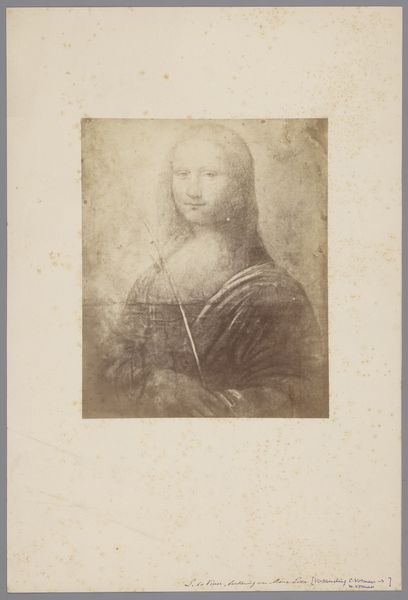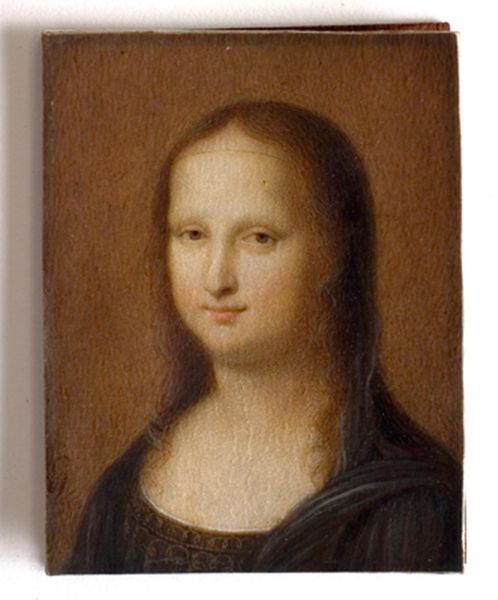
drawing, print, pencil, woodcut, wood-engraving
#
portrait
#
drawing
# print
#
charcoal drawing
#
pencil drawing
#
pencil
#
woodcut
#
academic-art
#
wood-engraving
#
monochrome
Dimensions: 9 1/8 x 6 3/8 in. (23.18 x 16.19 cm) (image)15 9/16 x 12 9/16 in. (39.53 x 31.91 cm) (sheet)
Copyright: No Copyright - United States
Editor: So this is Timothy Cole's "Mona Lisa" from the 19th century, a wood engraving after the original. The texture is so intriguing—almost like looking at it through a screen. How do you interpret this work through a formalist lens? Curator: Consider the rigorous geometry underpinning the composition. Observe how Cole uses line and tone to recreate Da Vinci’s sfumato. What is the effect of rendering that smoky haziness through a precise, linear medium? Editor: It’s interesting. It’s like the mystery is being meticulously reconstructed. I see how he focused on the gradations and tonal shifts in Leonardo’s work, even without color. Curator: Precisely. We must analyze the materiality as well. The translation from paint to wood engraving transforms the sensuousness of oil paint into the deliberate marks of the engraver's tool. Does the inherent nature of the medium augment or diminish the artistic quality, and what does it highlight or suppress in comparison to the original? Editor: That makes me wonder how the original texture of the engraving process itself becomes part of the “image.” Is it still a “Mona Lisa” or its own statement? Curator: An excellent point. Think about the impact of this new medium, wood engraving, as both a reproductive tool and an independent mode of expression. How does Cole’s exacting technique serve the artistic purposes within this formal arrangement? Editor: It shows how technique, even in reproduction, becomes an interpretative act. Curator: Exactly. Formalism invites us to look deeply at those structural choices. Editor: That focus on structure makes me appreciate how much work is involved to re-present art.
Comments
No comments
Be the first to comment and join the conversation on the ultimate creative platform.

